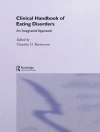How does a bacterial cell grow during the division cycle? This question is answered by the codeveloper of the Cooper-Helmstetter model of DNA replication. In a unique analysis of the bacterial division cycle, Cooper considers the major cell categories (cytoplasm, DNA, and cell surface) and presents a lucid description of bacterial growth during the division cycle. The concepts of bacterial physiology from Ole Maal e’s Copenhagen school are presented throughout the book and are applied to such topics as the origin of variability, the pattern of DNA segregation, and the principles underlying growth transitions. The results of research on E. coli are used to explain the division cycles of Caulobacter, Bacilli, Streptococci, and eukaryotes. Insightful reanalysis highlights significant similarities between these cells and E.coli. With over 25 years of experience in the study of the bacterial division cycle, Cooper has synthesized his ideas and research into an exciting presentation. He manages to write a comprehensive volume that will be of great interest to microbiologists, cell physiologists, cell and molecular biologists, researchers in cell-cycle studies, and mathematicians and engineering scientists interested in modeling cell growth. – Written by one of the codiscoverers of the Cooper-Helmstetter model- Applies the results of research on E. coli to other groups, including Caulobacter, Bacilli, Streptococci, and eukaryotes; the Caulobacter reanalysis highlights significant similarities with the E. coli system- Presents a unified description of the bacterial division cycle with relevance to eukaryotic systems- Addresses the concepts of the Copenhagen School in a new and original way
Stephen Cooper
Bacterial Growth and Division [EPUB ebook]
Biochemistry and Regulation of Prokaryotic and Eukaryotic Division Cycles
Bacterial Growth and Division [EPUB ebook]
Biochemistry and Regulation of Prokaryotic and Eukaryotic Division Cycles
Acquista questo ebook e ricevine 1 in più GRATIS!
Lingua Inglese ● Formato EPUB ● ISBN 9780080917474 ● Casa editrice Elsevier Science ● Pubblicato 2012 ● Scaricabile 6 volte ● Moneta EUR ● ID 2675313 ● Protezione dalla copia Adobe DRM
Richiede un lettore di ebook compatibile con DRM












